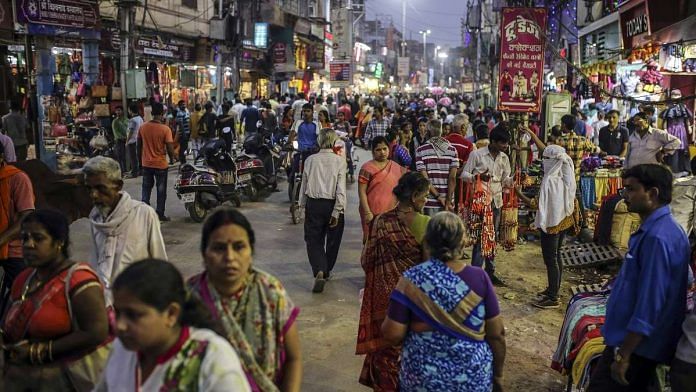New Delhi: The slowdown in the Indian economy is taking a toll on consumer confidence, with people talking of a dimmer outlook on jobs and income as well, a new RBI survey has shown.
The RBI consumer confidence survey is a periodic exercise where respondents are asked their views on different parameters — jobs, spending, general economic situation — to gauge their perception about their performance over a year.
The latest edition of this survey was published Wednesday, with a comparison between perceptions in July 2018 and 2019.
It exhibits dimming sentiments — as measured by the current situation index (CSI), an indicator of present consumer confidence — for a second successive season after the June survey, which followed a brief spell of optimism noted in the March exercise.
The CSI had turned optimistic this March— topping 100 — after a long time.
The future expectations index (FEI), an indicator of future consumer confidence, has also dropped for the second consecutive time since March.
Compared to the perception survey for June last year — the closest comparable, since the survey wasn’t conducted in July 2018 — the latest edition betrays deeper pessimism. The sentiment is much worse than the highs of March 2019 as well.
The perception is largely dimmer than that in June 2018 and March 2019 for the major components of these indices, like perception of the employment situation, income earned, and spending on non-essential items.
Views on India’s general economic situation held marginally higher optimism than seen in June last year, but was much lower than March 2019.
India’s growth has significantly slowed down, with its GDP growing at just 5.8 per cent year-on-year in the last quarter of financial year 2018-19, the lowest quarterly growth rate in five years.
The RBI announced a 35 bps rate cut Wednesday — after three successive cuts of 25 bps each in February, April and June this year — in a bid to revive flagging growth.
Calculating perception
The July 2019 consumer confidence survey was conducted in 13 cities and is based on 5,351 household responses.
In the survey, respondents were asked if their perception on parameters like the general economic situation, income earned, spending, price level, and employment scenario has improved, remained the same, or worsened compared to last year.
The net response on each of these parameters was then tabulated, by calculating the difference in the percentage of respondents who said the situation had improved and those who perceived it had worsened.
For example, if 60 respondents in a pool of 100 say the situation has improved and 20 say it has worsened, the net response would be 40, which means a net 40 per cent of respondents feel the situation is getting better.
Respondents are also asked their expectations on these parameters for the year ahead.
The results are then used to calculate the CSI and FEI.
Also read: Is the 2019 Economic Survey being excessively optimistic about India’s economy?
Falling sentiments
Between June 2018 and July 2019, there was a 4.4 percentage point increase in the net response for the general economic situation — which suggests a marginal increase in enthusiasm.
However, there was a fall of 14.7 percentage points between March and July this year — indicating a fall in sentiments.
According to the survey, the net one-year-ahead expectation seems to be suggesting a similar trend as present perception.
Non-essential items spending, income and employment
The change in demand for non-essential items — like furniture, electronic items and consumer durables — is a good indicator of the economic situation as consumers cut down on them during bad times and purchase more of these when things get better.
In the July survey, the perception of people vis-a-vis their spending on non-essential items shows a downward trajectory year-on-year.
The net percentage of people who believe that their spending on non-essential items increased was recorded at 15.9 per cent this March and fell to 6.9 per cent in the July survey.
Both these numbers are far lower than those recorded in June 2018, when the figure stood at 43.8 per cent.
The same trend is visible with regard to future expectations: The expectation of spending on non-essential items a year later declined from 29.8 to 14.6 per cent between March and July, both numbers much lower than last year.
The graphics below show that the perception on employment and income are at one of their lowest ebbs since last year, even though future expectations are slightly better.
Also read: Modi govt didn’t address jobs crisis in the first term. India’s progress depends on it now




The economy in low earth orbit, politics in geosynchronous orbit.